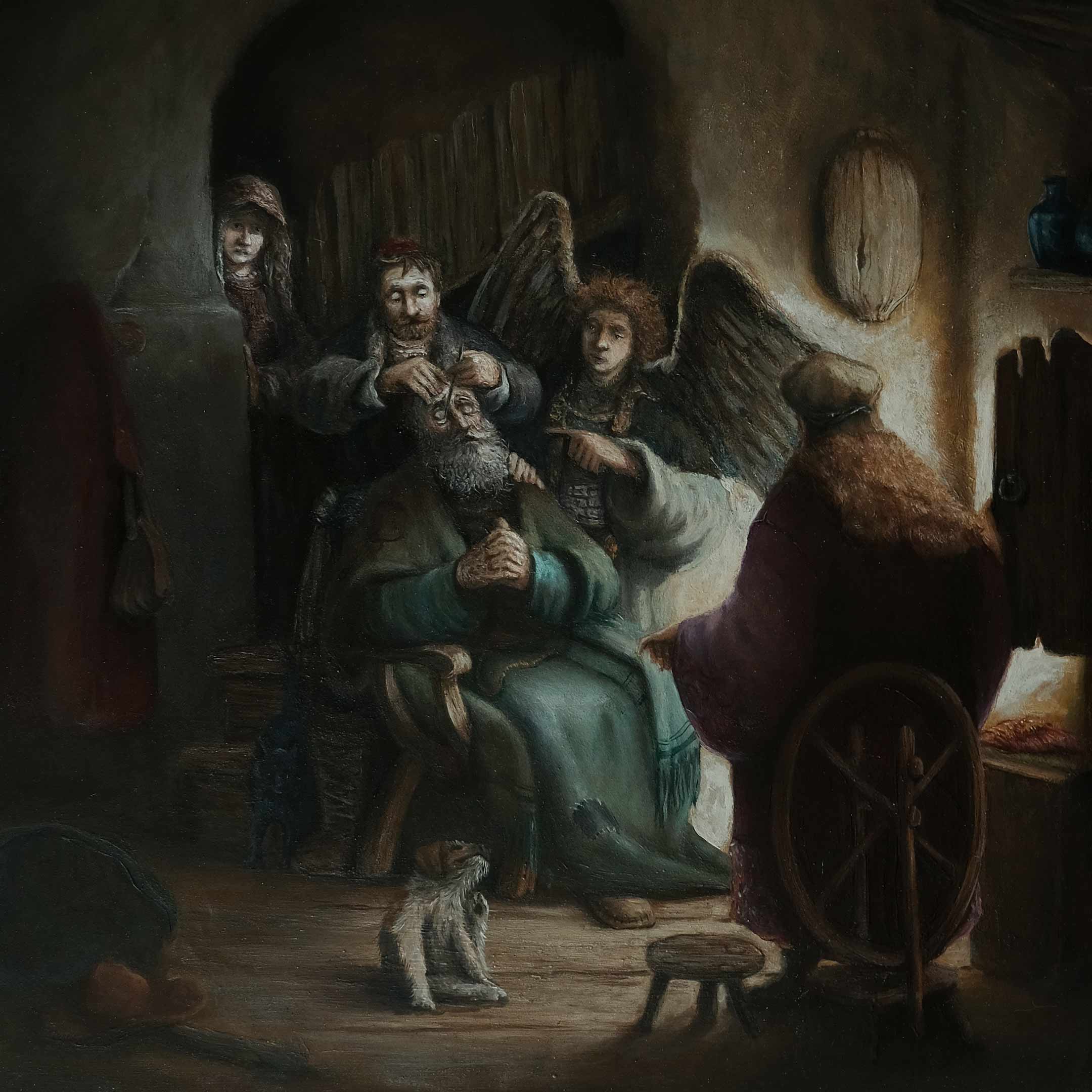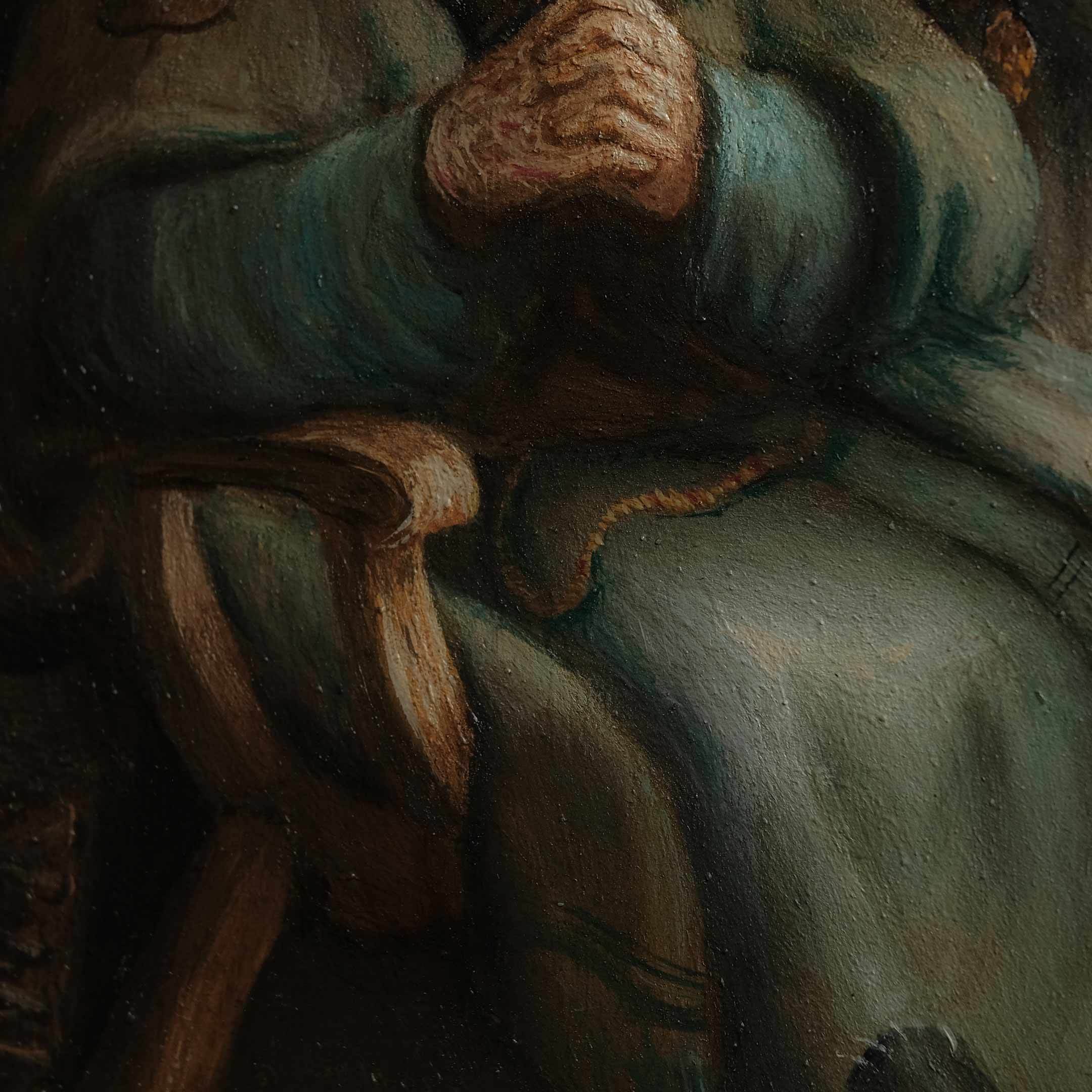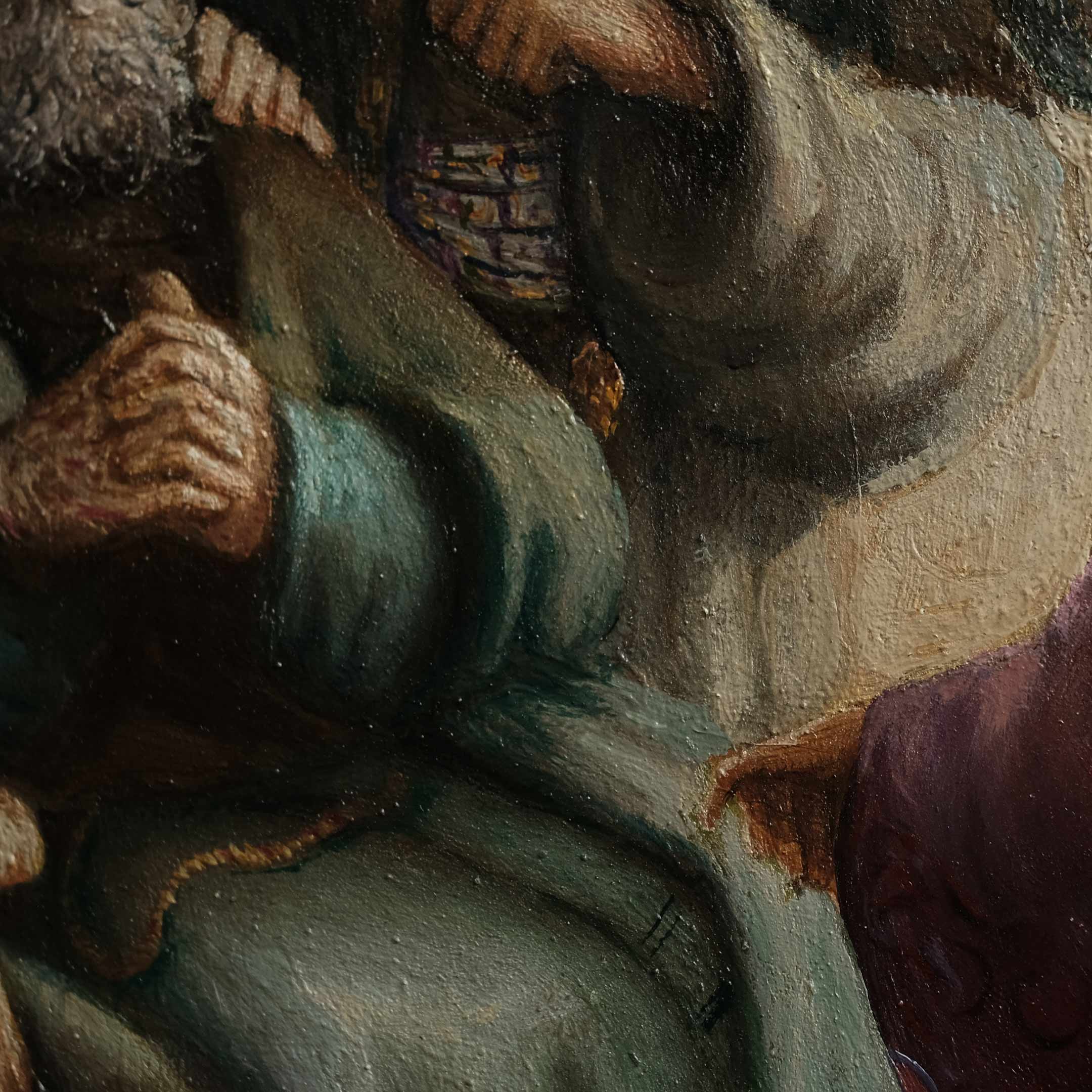The Healing of Tobit
Oil on Wood , 46x53 cm private colection
Rendered in oil on walnut wood, The Healing of Tobit is a masterfully composed painting that revives the spirit of Old Testament storytelling through the visual language of the Old Masters. The scene, drawn from the apocryphal Book of Tobit, portrays the deeply human and divine moment when the young Tobias, guided by the Archangel Raphael, heals his blind father Tobit using the gall of a fish — a miraculous remedy instructed by the angel himself.

The Healing of Tobit
This artwork is executed with painstaking attention to the historical techniques of the Flemish and Dutch masters. The surface — a carefully prepared walnut wood panel — was selected not only for its durability but also for its rich tonal resonance, echoing the supports favored by painters such as Jan van Eyck and Rogier van der Weyden. The painter's use of genuine pigments, including lead white, lead-tin yellow, bone black, smalt, and the cochineal-derived carmine pigment (cochinella), ensures an intense chromatic depth and subtle luminosity that enhances the sacred drama of the composition.
The lighting, chiaroscuro-rich and theatrical, directs the viewer’s eye toward the central gesture: Tobias, young and earnest, gently applying the fish gall to his father’s eyes, while the Archangel Raphael watches with divine calm. The inclusion of humble domestic details — a spinning wheel, a simple stool, a dog gazing upward — anchors the miraculous in the realm of the everyday, making the biblical story emotionally immediate and spiritually resonant.

ON TECHNIQUE AND PIGMENTS
The pigments used in this work are all historically accurate and of natural origin, echoing the palette of artists like Rembrandt, van Eyck, and Rogier van der Weyden:
-
Lead White (Flake White) – The foundational pigment, used extensively in underpainting, flesh tones, and highlights. It provides unmatched handling and optical properties due to its refractive index, warm tone, and drying speed. Unlike titanium white, lead white integrates with oil in a way that yields structural stability and soft, enamel-like transitions in flesh.
-
Lead-Tin Yellow (Type I) – A powerful, opaque yellow used in light passages and clothing, prized for its buttery texture and resistance to color shifting. In this composition, it subtly enhances the warmth of the angelic figures and garments.
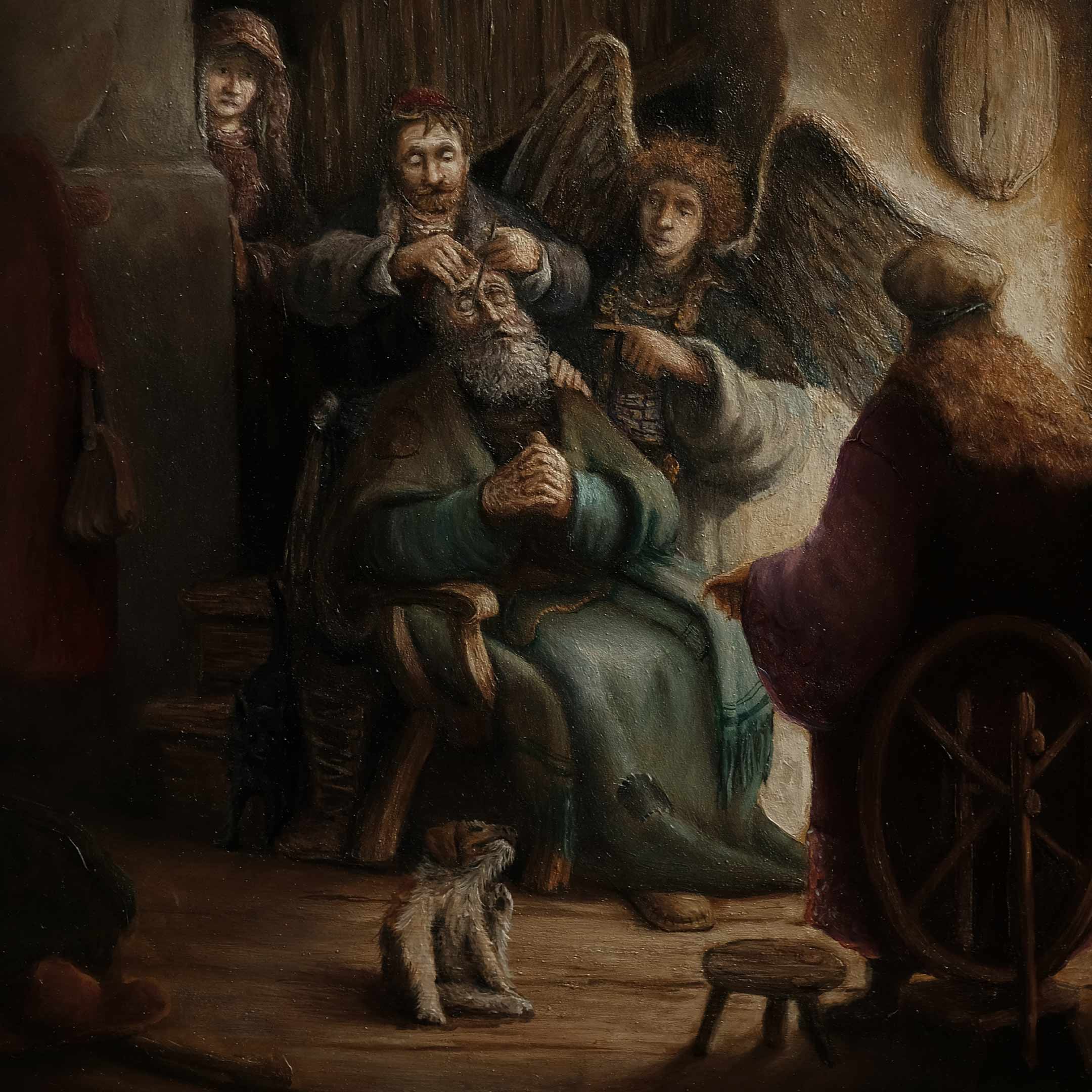
-
Bone Black – Derived from calcined animal bones, this pigment was used not only in grisaille but also to temper chromatic passages and deepen shadows. Its warm undertone provides a gentle alternative to the often too-cold ivory black.
-
Smalt – A potassium glass pigment with cobalt, used as a transparent blue glaze in background shadows and fabrics. While unstable in aqueous media, smalt maintains its brilliance in oil when properly handled, adding an ethereal coolness to deeper tones.
-
Cochineal Carmine (from Coccus cacti) – A deep, organic red pigment extracted from insects, used here in glazes and flesh undertones. Its high chromatic intensity and transparency make it ideal for capturing inner warmth and subtle blood flow beneath the skin.
Each pigment was bound in cold-pressed linseed oil and mulled by hand to achieve maximum control over consistency and refractive behavior. The use of oil rich in fatty acids prolongs working time and enhances the depth of glazes.
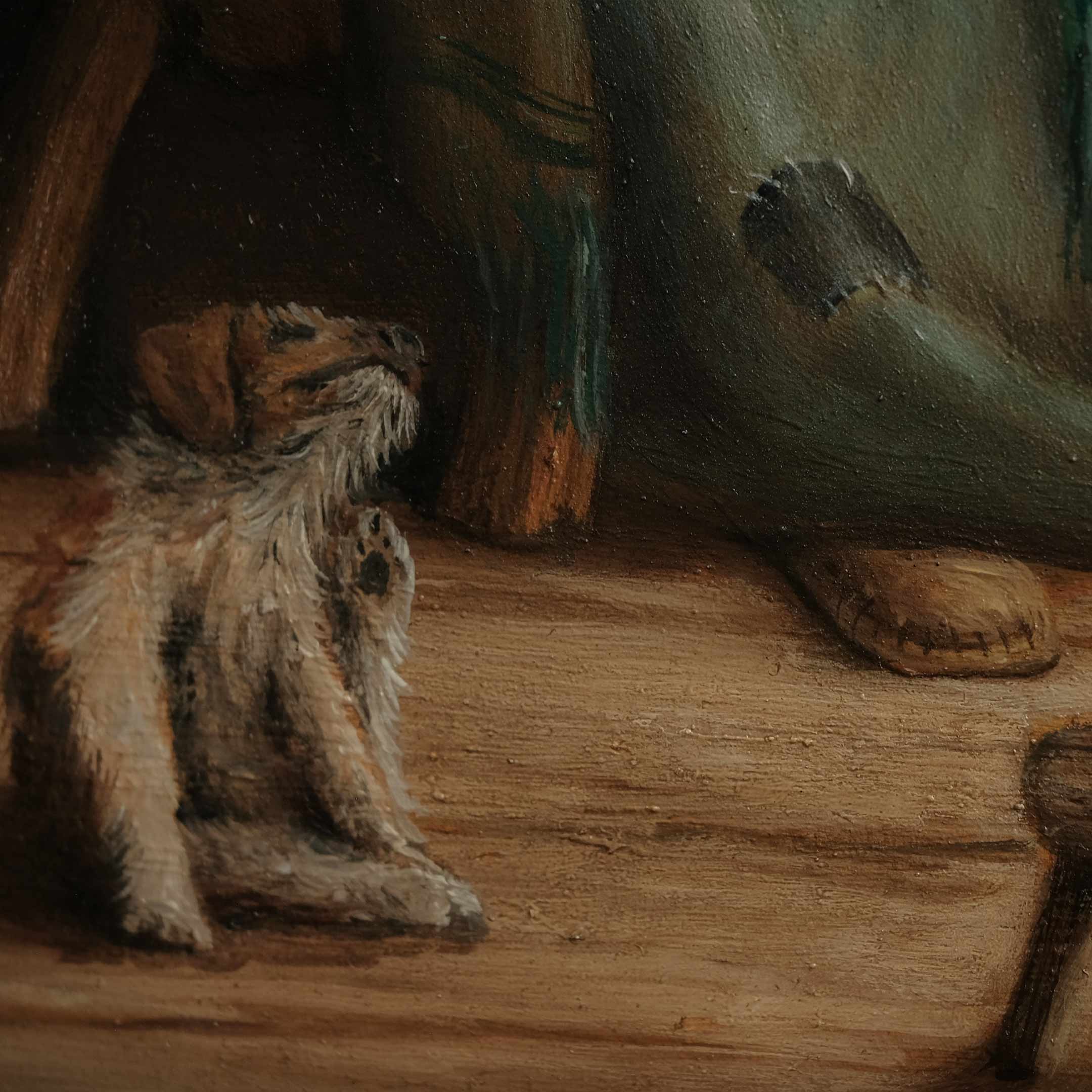
Glazing and Final Layers:
The painting's final stages were executed through successive glazes — ultra-thin, oil-rich transparent paint layers applied over fully dried underlayers. These glazes, often tinted with smalt or cochineal, were used to adjust chromatic intensity and atmospheric unity. The highlights, conversely, are built up in denser scumbles using lead white mixtures, imparting tactile form and light-catching surface effects.
A final protective layer of natural dammar varnish, aged and softened for elasticity, was applied to unify gloss and enhance depth — completing the painting in the spirit of the old masters.



